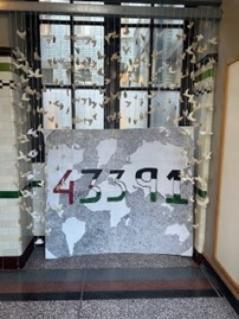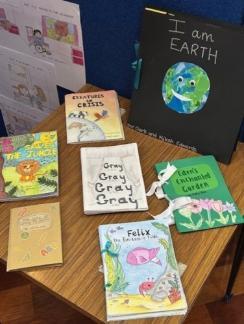Creativity, Culture, and Connection: Embedding Arts-based Pedagogies in Teacher Education
Paul Wickham is a Teaching Fellow in Education and Depute Course Leader of the BA (Hons) Primary Education Programme at the Strathclyde Institute of Education
As I reflect on my practice within the Strathclyde Institute of Education, I continue to feel strongly that arts-based practices must be authentically valued and nurtured in schools — not as an ‘add-on’, but as a central and vital part of education. I would argue that the current, dominant educational landscape has marginalised the arts and thereby excluded important ways of knowing, being and participating in education and society. My work is underpinned in learning how the arts can be used to deconstruct, challenge and re-shape educational theories and practice with a focus on culturally sustaining pedagogy. Two key questions underpin this activity:
In which ways do creativity and arts-based approaches support the participation of every learner in increasingly diverse, multilingual, and globalised classroom environments?
How might arts-based practices build social cohesion, develop empathy and connections, as well as offering a powerful approach for culturally relevant pedagogical experiences?
As educators, we are preparing learners not just to meet academic targets, but to become critical, creative, and culturally responsive practitioners. This belief is at the heart of my work with Initial Teacher Education (ITE) students, and particularly within the modules I lead on the BA Primary Education programme: Exploring Creativities in Practice (ECP) and Globally Connected Communities (GCC).
Both modules are built on the principle that creativity and cultural relevance are not optional extras, but rather essential tools for inclusive, engaging, and impactful learning. In the ECP module, students are invited to explore a key theme linked to one of the UN Sustainable Development Goals through a creative lens. The assessment outcomes are powerful and varied, from immersive art installations to live performances, all of which serve as both personal and political expressions of care, compassion, and hope for the world our learners are growing into.
In the GCC module, the focus is on understanding how we can use the Arts to give children and young people voice and agency in meeting the Sustainable Development Goals and upholding UNCRC. The core assessment task invites students to co-create a hand-crafted children’s book that explores themes of inclusion and sustainability. Again, my scholarly and pedagogical interests centre around how we support the participation of every learner in increasingly diverse, multilingual, and globalised classroom environments.
This interdisciplinary approach encourages both critical thinking and creative storytelling, while also allowing students to consider whose voices are included, and whose are missing in the narratives we share with children.
Feedback from students has been overwhelmingly positive. Many speak of the confidence these creative projects have given them, and of how the work has directly informed their school placements. One student recently reflected within the module evaluation:
“I have really enjoyed this (GCC) class. I feel as though it has taught me a lot about the global sustainable development goals as well as inclusivity. I can now take these tools with me when I have my own classroom….”
Creativity, culture, and connection are not just themes in our modules but should be guiding principles for a more inclusive and imaginative education system.
I close with some examples of students’ work to give a flavour of the responses to these module themes.
 |
 |
 |
|---|---|---|
|
Connections: ‘Home is where the Heart is’ Exploring Creativities in Practice |
Immersive Installation: Gaza conflict. Exploring Creativities in Practice |
Examples of hand-crafted children’s books Globally Connected Communities |
Published 27/06/2025
